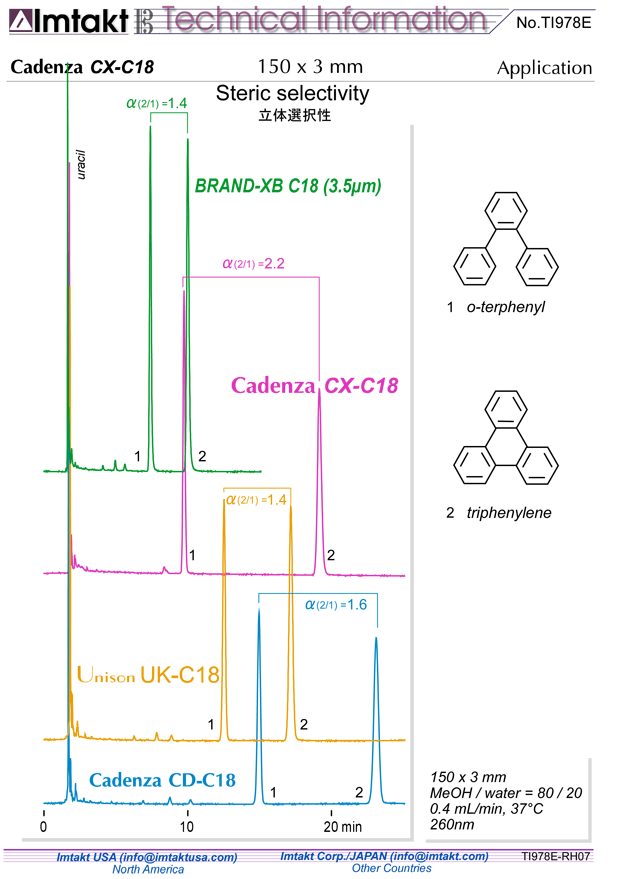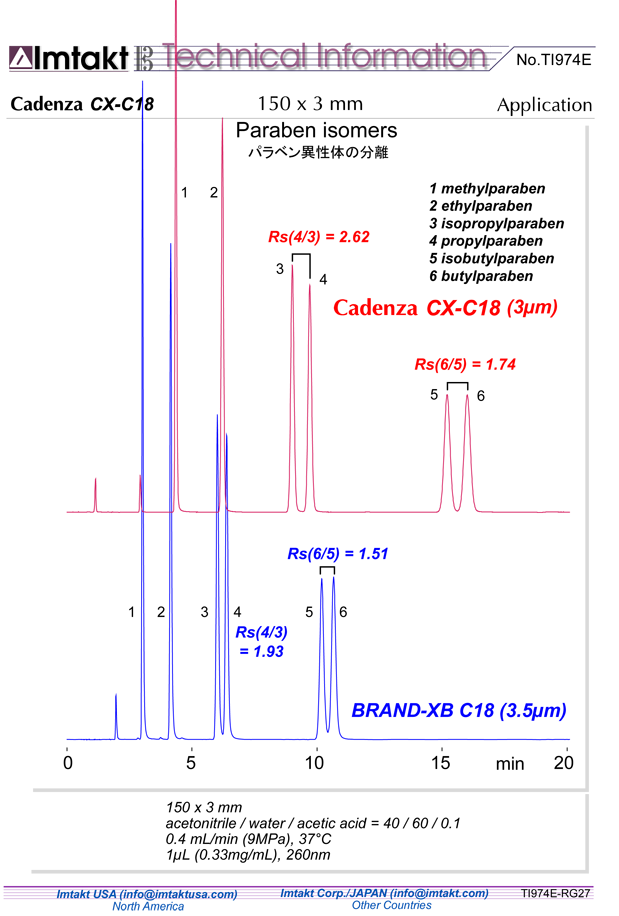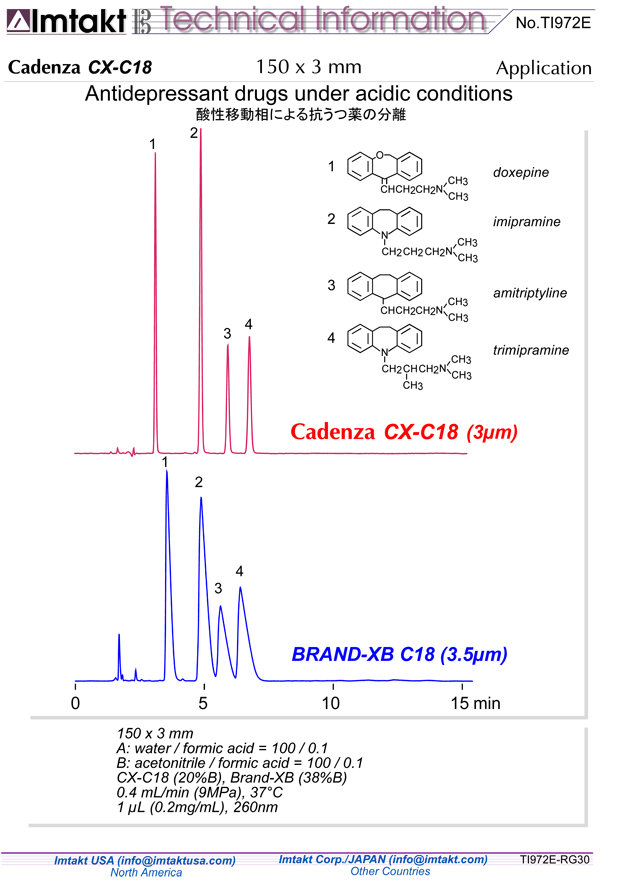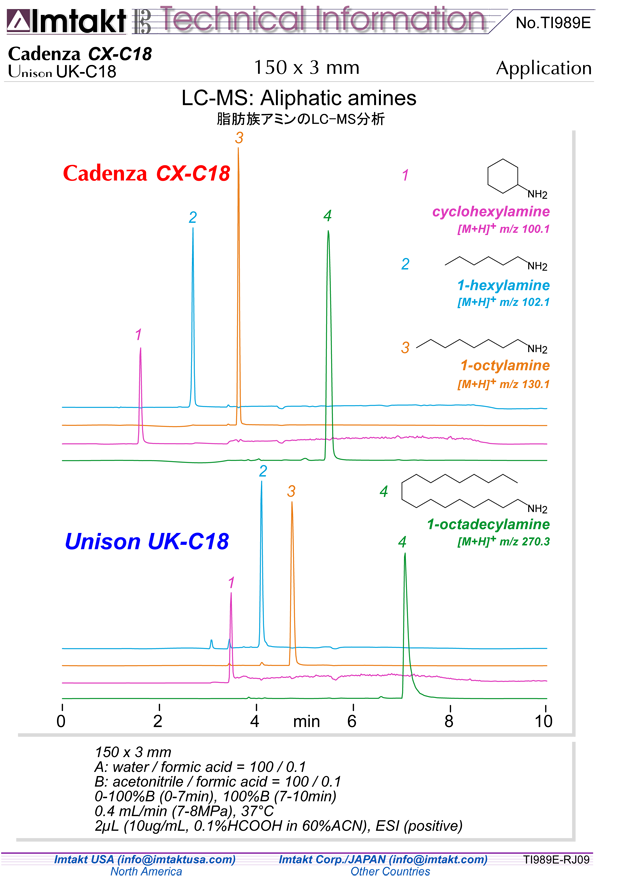Cadenza 5CX-C18
High steric selectivity and molecular recognition C18 column for general use, ideal for separation of
isomers and other difficult to separate compounds. Brand new polar end-capping technology provides a
more complete coverage of surface silanols and unique selectivity.
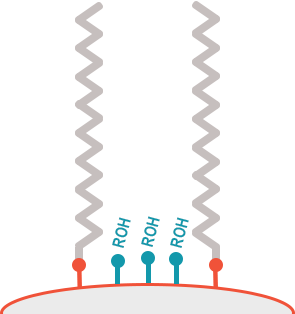
Conventional ODS columns, including hybrid-silica type columns, require extensive end-capping in order
to decrease residual silanols, which may negatively affect peak shape for basic compounds.
Traditionally, this end-capping process has used methyl silane compounds which have a mild
hydrophobic interaction. Viewing this interaction in terms of reversed-phase mode, the surface of the
stationary phase presents two very different kinds of hydrophobic structures, octadecyl ligands(C18) and
the methyl end-capping. These different hydrophobicities may provide an inconsistent response against
a solutes interaction with the stationary phase, resulting in poor peak shape and reduced plate counts.
Instead of relying on traditional end-capping with trimethyl silane (TMS) compounds, we have
succeeded to develop a revolutionary surface modification technology using alcohol structures, which
has been adapted to our brand new Cadenza 5CX-C18. This means that electrostatic interaction from
the polar end-capped surface and hydrophobic interaction from the C18 ligand will localize the polarity
of the surface and increase the recognition power of a complex compounds hydrophobic/hydrophilic
structure. Therefore, Cadenza 5CX-C18 will have an alternative selectivity for certain compounds and
possibly improved peak shape compared to conventional end-capped ODS columns.
- Our first column featuring modified alcohol polar end-capping
- Nearly 100% coverage of active surface silanol sites
- Reduces tailing for basic compounds in acidic conditions
- Alternative selectivity from traditional C18 columns
- High steric selectivity and molecular recognition
- Ideal for difficult isomer or impurity separations
-
 Column TypeReverse Phase
Column TypeReverse Phase -
 Particle Size5 µ
Particle Size5 µ
-
 Pore Size12 nm
Pore Size12 nm
-
 Length10-250mm
Length10-250mm
-
 Internal Diameter1.0-28.0mm
Internal Diameter1.0-28.0mm

